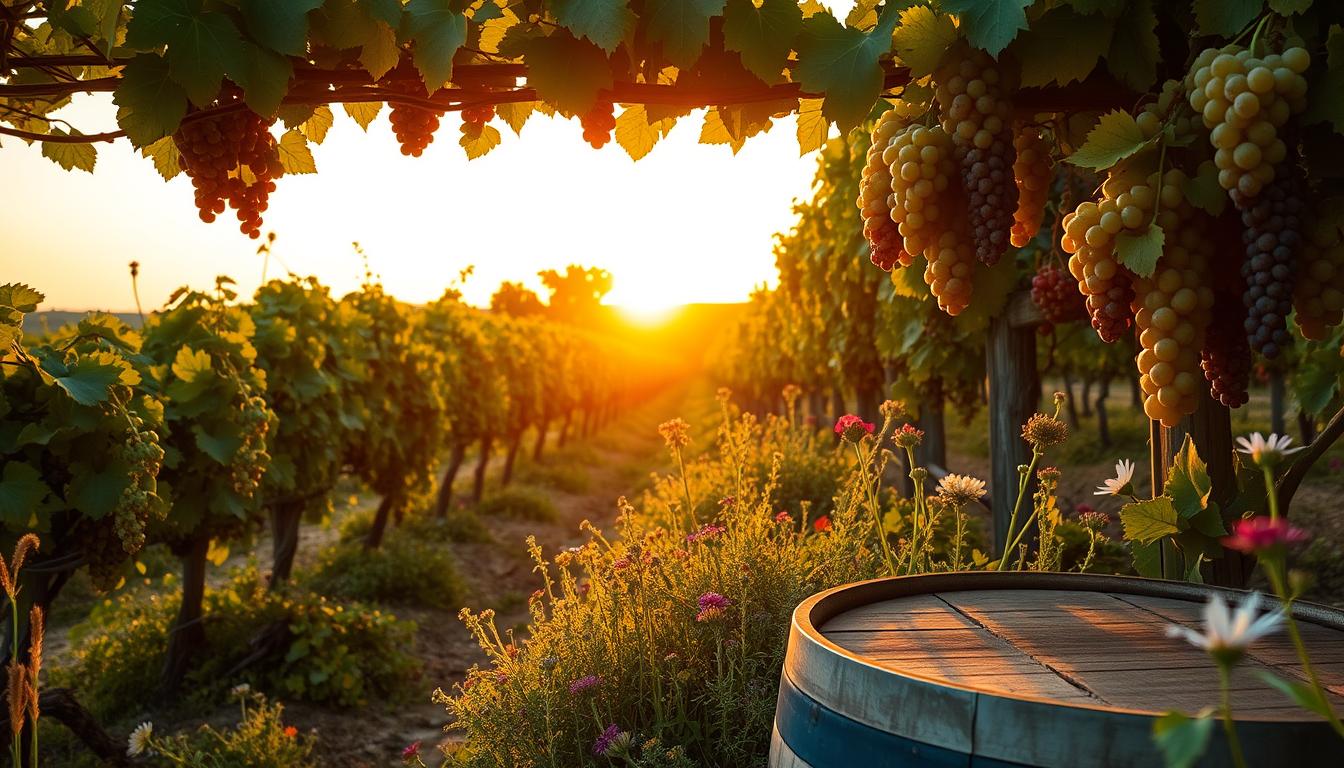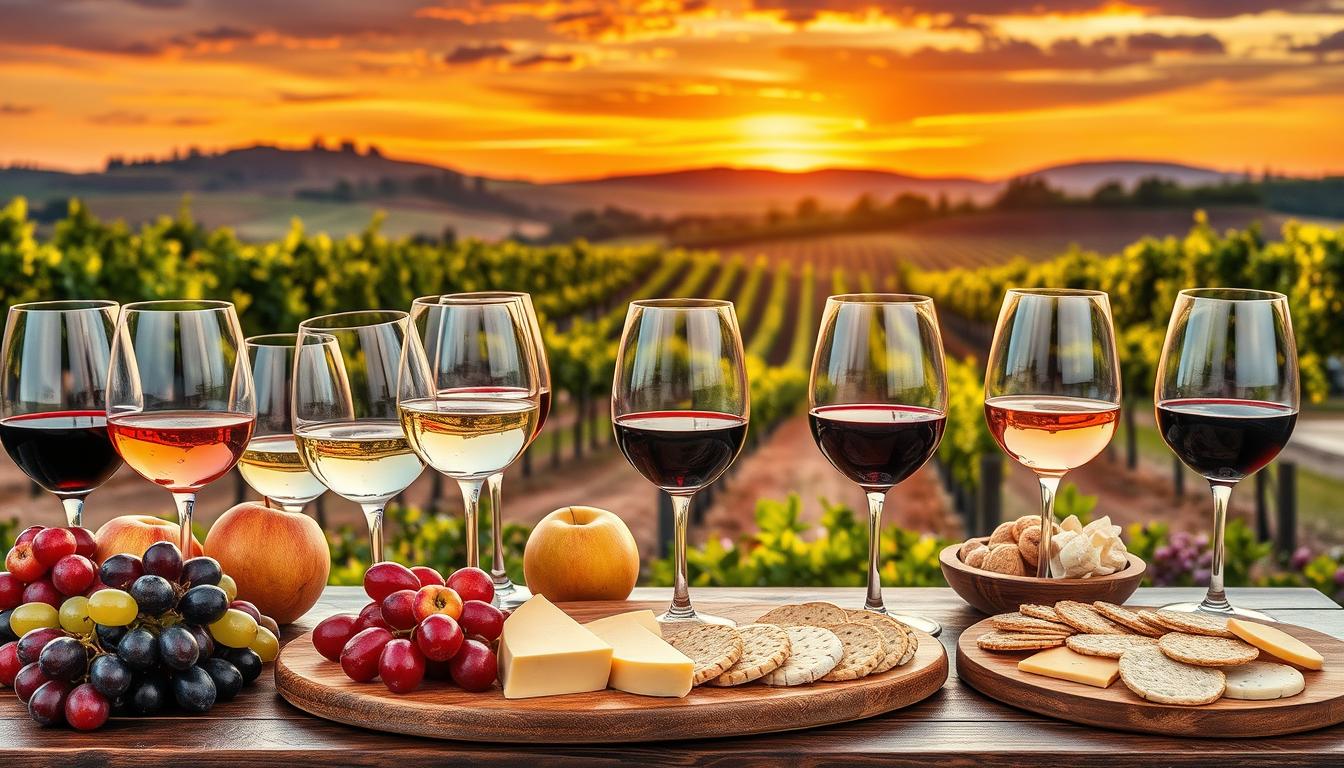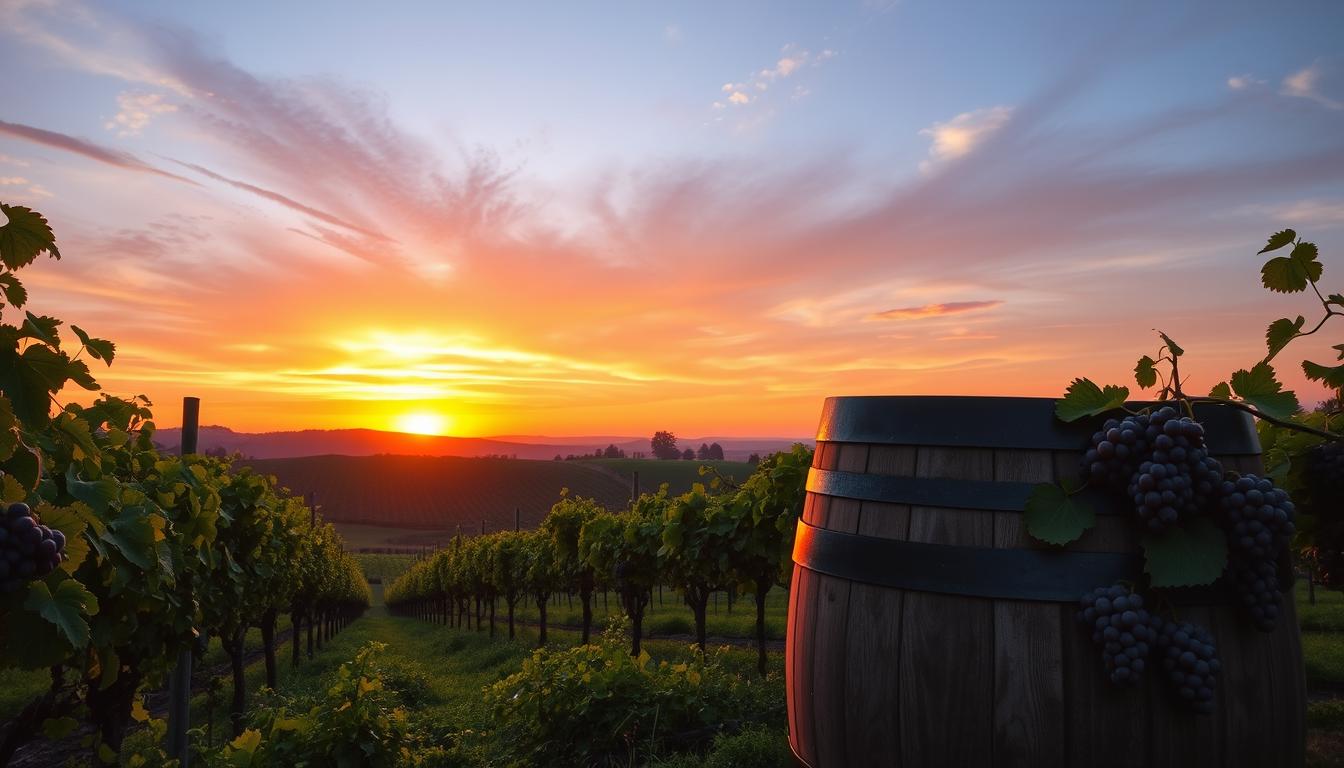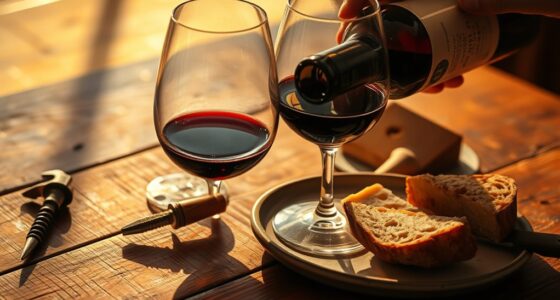Imagine settling down after a long day, wine glass in hand, and feeling the stress of the world slowly dissipate with each sip. For many, this moment is sacred—a small haven of peace and relaxation. Yet, as you lift that glass to your lips, have you paused to consider what’s inside? With the rise of organic wines, there’s a growing opportunity to not only savor that moment but also to embrace a healthier lifestyle. These natural wines, crafted with heart and care, promise benefits that extend beyond taste, offering a gentler choice for your body and the environment.
Organic wines stand out as a healthier alternative to conventional options thanks to their lower levels of additives and sulfites. The essence of eco-friendly winemaking shines through as producers increasingly prioritize sustainable practices, ultimately benefiting both our health and the planet. As you explore the vast organic wine selection, you may find yourself sipping with a sense of purpose, knowing each glass contributes to a healthier you and a healthier Earth. The allure of organic wines invites you to savor and celebrate in a mindful manner.
Key Takeaways
- Organic wines often have lower sulfite levels, potentially reducing adverse reactions for sensitive individuals.
- They are produced using eco-friendly practices, benefiting both health and the environment.
- Red wines, especially Pinot Noir, are favored for their higher resveratrol content, known for anti-inflammatory properties.
- The increasing popularity of organic wines offers more affordable options in the market.
- Embracing organic wines can be a significant step towards sustainable drinking habits.
What Are Organic Wines?
Organic wines are produced exclusively from organic grapes, adhering to strict regulations that prohibit the use of synthetic chemicals, GMOs, herbicides, and pesticides. This commitment to sustainable practices sets them apart from conventional wines, which often rely on numerous chemicals during production.
The certification for organic wines involves rigorous standards. All additives and yeasts used in the winemaking process must also be certified organic, ensuring that what you sip is genuinely natural. This aspect of organic winemaking promotes not only the health of consumers but also the health of the ecosystem.
In the United States, organic wines face unique challenges. Unlike other organic products, organic wines represent less than 4% of total food sales, demonstrating a need for increased awareness and acceptance among consumers. Wines labeled “Made with Organically Grown Grapes” contain lower levels of sulfites, which contributes to a more delicate flavor profile but can reduce shelf life.
Organic vineyards often deal with the impacts of neighboring non-organic farms. The proximity to these farms can complicate organic practices due to possible contamination from their use of synthetic chemicals. Nonetheless, organic farming fosters a vibrant and biodiverse environment, improving the health of local ecosystems significantly.
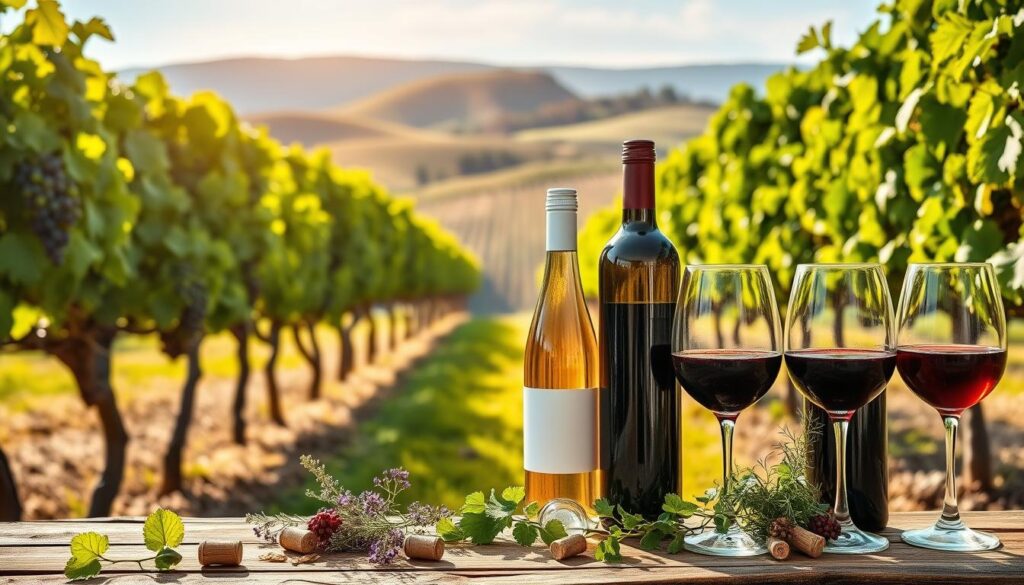
Overall, organic wines offer a unique and environmentally friendly alternative to conventional options, appealing to those who prioritize sustainability in their dining and drinking choices. With certification programs such as SIP Certified and USDA NOP, consumers can feel confident in their selection of organic wines, knowing they contribute to healthier lifestyles and the preservation of our planet.
How Organic Wines Differ from Conventional Wines
When delving into the world of wines, you may find yourself considering the differences between organic wines and conventional wines. One significant distinction lies in the treatment of wine additives. Conventional wines often include various chemicals and preservatives that can affect both flavor and quality. In contrast, organic wines present a cleaner option, ensuring a more natural tasting experience.
One of the primary concerns for many wine enthusiasts is the presence of sulfites in wine. Organic wines are required to have naturally occurring SO2 levels of less than 10 mg/L, which is ideal for individuals sensitive to sulfites. Meanwhile, conventional wines may have added sulfites exceeding 100 parts per million, raising potential health concerns.
The labeling for organic wines in the United States includes the USDA logo, assuring consumers of their organic integrity. Biodynamic winemaking is another fascinating area, with grapes grown biodynamically receiving certification from the Demeter organization. This method emphasizes the health of the vineyard environment, enhancing the overall flavor and quality of the wine.
Within the realm of natural wines, minimal manipulation occurs during the winemaking process. Fermentation typically utilizes ambient yeasts, giving natural wines their unique character. Unlike organic wines, natural wines do not undergo fining or filtering, resulting in a hazy appearance due to settled grape solids at the bottom of the bottle.
As trends shift towards healthier choices, you may find that more wine lovers are opting for organic varieties. This decision often stems from a desire to support sustainable and environmentally friendly agricultural practices, moving beyond mere pesticide concerns. It’s noteworthy that the price of organic wines is not always higher than conventional wines, making them accessible options.
Here’s a brief comparison of the key aspects of organic and conventional wines:
| Aspect | Organic Wines | Conventional Wines |
|---|---|---|
| Wine Additives | Minimal, often none | Various chemicals and preservatives |
| Sulfites | Less than 10 mg/L | Exceeding 100 ppm |
| Certification | USDA logo | Variable, may lack certification |
| Fining and Filtering | None | Commonly used |
| Sustainable Practices | Uses natural fertilizers | Varies widely |
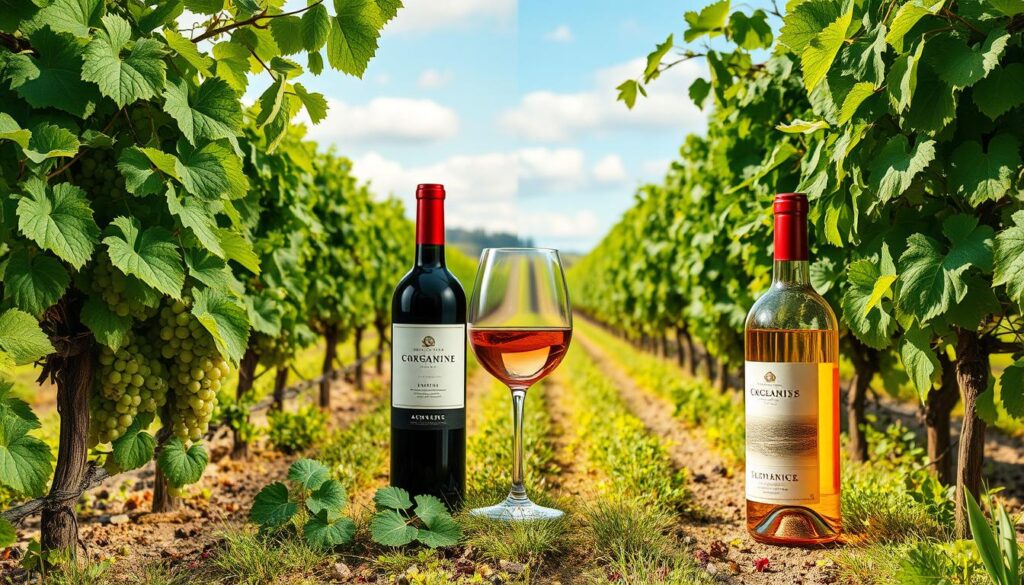
Benefits of Choosing Organic Wines
Opting for organic wines brings numerous advantages that enhance both your health and overall wellness. One significant aspect of organic wine benefits lies in their reduced exposure to chemicals. Conventional wines often contain harmful preservatives, which are largely absent in organic varieties. This not only promotes better health but also aligns with a broader commitment to sustainability.
Low sugar wines, prevalent in the organic category, cater to health-conscious consumers. These wines tend to contain fewer sugars, making them a preferable choice for those monitoring their sugar intake. Additionally, organic wines are known for their higher levels of beneficial antioxidants, such as resveratrol. This powerful antioxidant offers various health benefits of organic wines, including promoting heart health by increasing the activity of sirtuins. These proteins serve to ward off aging-related diseases, ultimately contributing to longevity.
Research supports the notion that moderate wine consumption can lead to a longer life span. A seven-year study involving light to moderate drinkers revealed that those consuming two to seven glasses of wine weekly showed lower depression rates. The high resveratrol content in organic wines further reduces the risks of developing conditions like dementia and Alzheimer’s disease.
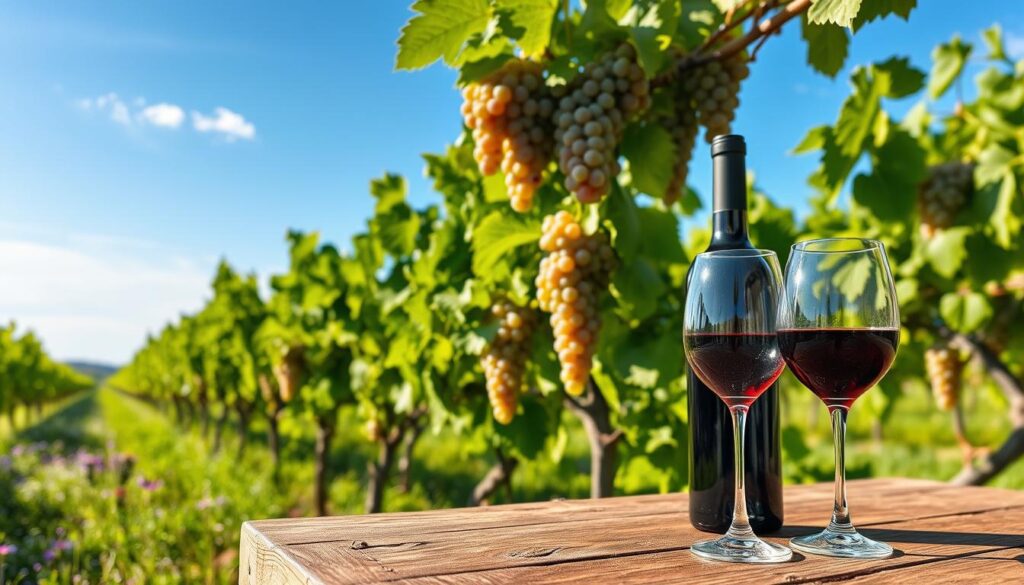
In addition to cognitive health, moderate organic wine consumption fosters better skin health. Preventing skin aging, boosting elasticity, and creating a natural glow are just a few benefits linked to daily wine consumption. Furthermore, organic wines can improve immunity by harnessing the richness of antioxidants alongside ethanol, which enhances vaccination potency.
Organic grape production has surged by 120%, reflecting the growing interest in healthier agricultural practices and the memorable taste of these wines. Organic farming employs better practices, such as crop rotations and cover crops, ensuring optimal grape quality. With noticeably fewer chemical additives and lower sulphur dioxide levels, organic wines offer a stronger, purer taste experience that enthusiasts often praise.
| Benefit | Description |
|---|---|
| Reduced Chemical Exposure | Lower levels of harmful preservatives than conventional wines |
| Lower Sugar Content | Fewer sugars make organic wines suitable for health-conscious consumers |
| Higher Antioxidant Levels | Resveratrol promotes heart health and longevity |
| Improved Mental Health | Moderate consumption linked to lower depression rates |
| Better Skin Health | Helps in preventing skin aging and promotes a natural glow |
| Boosted Immune System | Rich in antioxidants that enhance vaccine efficacy |
| Sustainable Practices | Organic farming promotes better grape quality and environmental health |
Understanding Organic Wine Certification
To truly appreciate organic wines, you should first understand the organic wine certification process. This certification ensures that the wines you choose adhere to strict regulations outlined by the USDA. These regulations focus on farming practices aimed at promoting sustainability and health, which is critical in today’s eco-friendly winemaking landscape.
Certified organic wine producers must grow their grapes without the use of harmful pesticides, herbicides, or synthetic fertilizers. The grapes and agricultural ingredients must be certified organic, while any non-agricultural components should not exceed 5 percent of the total product. Regulations prohibit the addition of sulfites to organic wine, ensuring a purer product.
The standards for organic certification also include using specific farming techniques such as compost, compost teas, and cover crops. Producing USDA organic wines requires a commitment to sustainability that resonates with health-conscious consumers.
In addition to adhering to these standards, wines labeled as “made with organic grapes” must contain 100 percent certified organic grapes. This approach not only emphasizes quality but also fosters trust among consumers eager for authentic organic wine experiences.
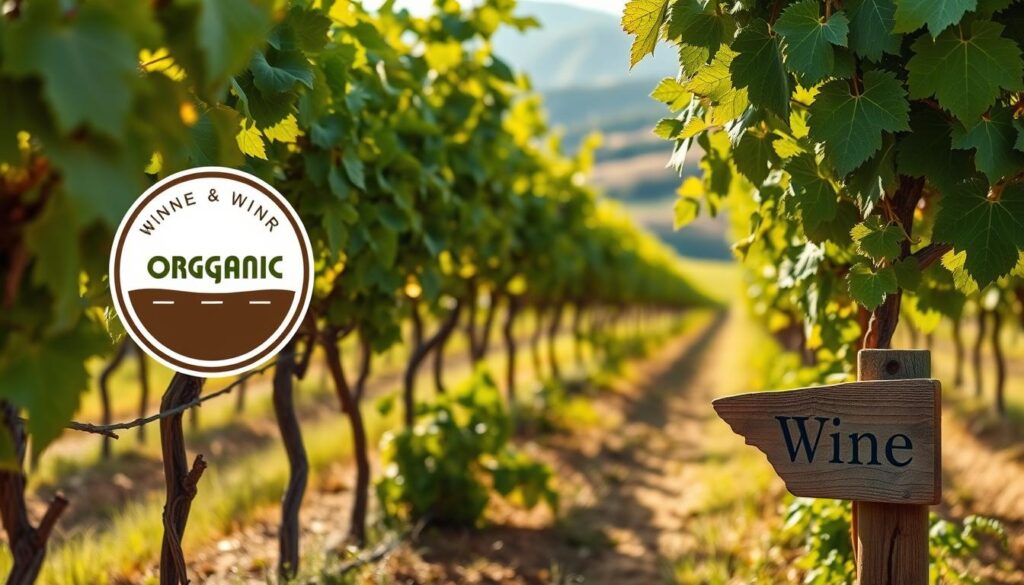
Understanding the aspects of organic certification enhances your knowledge and confidence in choosing wines that align with your health and sustainability values. Whether you’re exploring natural wines or certified biodynamic wines, knowing that these products respect both the environment and agricultural integrity enables you to make informed choices.
Best Organic Red Wines
Exploring the world of organic red wines unveils remarkable selections that not only excel in flavor but also adhere to sustainability practices. Incorporating the best organic red wines into your rotation supports healthy choices while satisfying your palate. Here are two outstanding options worthy of your attention.
Bonterra Merlot
Bonterra Merlot stands out in the organic wine selection, delighting tasters with its lush flavors of cherry and subtle mocha. This wine perfectly exemplifies the quality that can arise from organic farming techniques. As you savor each sip, you are not just enjoying a delightful red wine option but also supporting a brand committed to sustainable viticulture. With increasing popularity among organic red wines, Bonterra has quickly become a favorite among connoisseurs.
Mother’s Choice Cabernet Sauvignon
Mother’s Choice Cabernet Sauvignon showcases bold flavors while ensuring that sulfites remain undetectable. This remarkable wine captures the essence of organic winemaking and offers a unique profile that appeals to those who appreciate complex taste experiences. With a strong emphasis on quality, this selection is a prime example of the innovative red wine options available in the organic world. Choosing Mother’s Choice supports not just your refined taste but the overall mission for healthier, environmentally mindful choices.
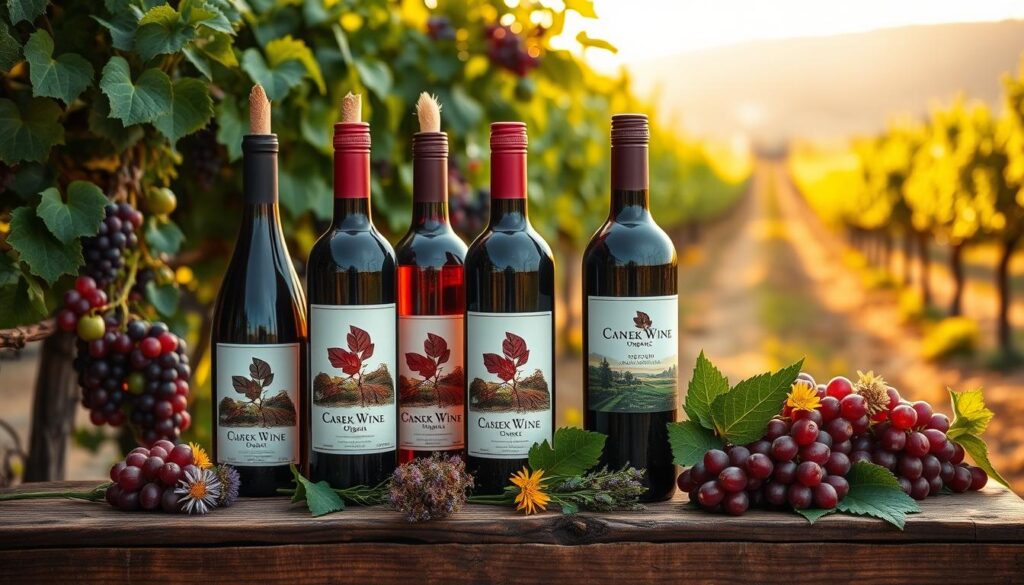
Best Organic White Wines
When exploring the best organic white wines, two remarkable selections stand out, offering unique profiles and sustainable practices. These organic wine reviews highlight exceptional choices that elevate your wine experience while adhering to environmentally friendly methods. Discovering these white wine varieties allows you to indulge in delightful flavors while supporting organic farming initiatives.
L’Auratae Pinot Grigio
L’Auratae Pinot Grigio is celebrated for its crispness, showcasing vibrant notes of stone fruits and a refreshing finish. This wine reflects the region’s terroir, with each sip emphasizing its organic origins. Priced competitively around $22.52, it represents excellent value among the best organic white wines. The wine has received positive attention, contributing to its popularity in organic wine reviews.
Frog’s Leap Sauvignon Blanc
Frog’s Leap Sauvignon Blanc stands out with its bright citrus flavors, making it perfect for a sunny afternoon. The winery’s commitment to sustainable farming further enhances this wine’s appeal. With its vibrant profile and a widespread appeal, this choice is among the most lauded in the white wine varieties. Priced similarly, it fits comfortably within the average Pricing of organic white wines while providing a memorable tasting experience.
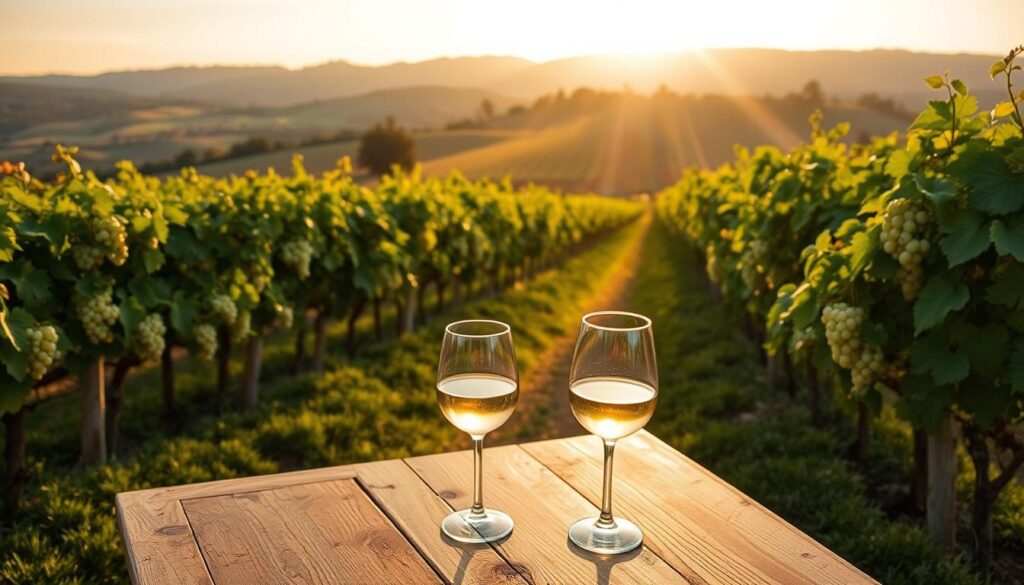
Best Organic Rosé Wines
Exploring the realm of organic rosé wines unveils an exciting array of pink wine options that delight the palate. The diversity of flavors in the best organic rosé wines reflects a commitment to sustainable practices and quality ingredients. From the classic Provencal-style light pink rosé to vibrant blends, these wines offer something for every occasion.
One standout option is the Benziger De Coelo Rosé, sourced from sustainably farmed Merlot grapes in the picturesque North Fork vineyard. This wine boasts a beautiful balance of freshness and fruitiness, incorporating organic and biodynamic farming methods that enhance its character.
Similarly, the Deloach Pinot Noir Estate Rosé impresses with its refreshing fruit notes, showcasing a blend that includes Cinsault, Grenache, and Syrah grapes. Each sip delivers a pleasant experience that highlights the artistry involved in organic wine selection.
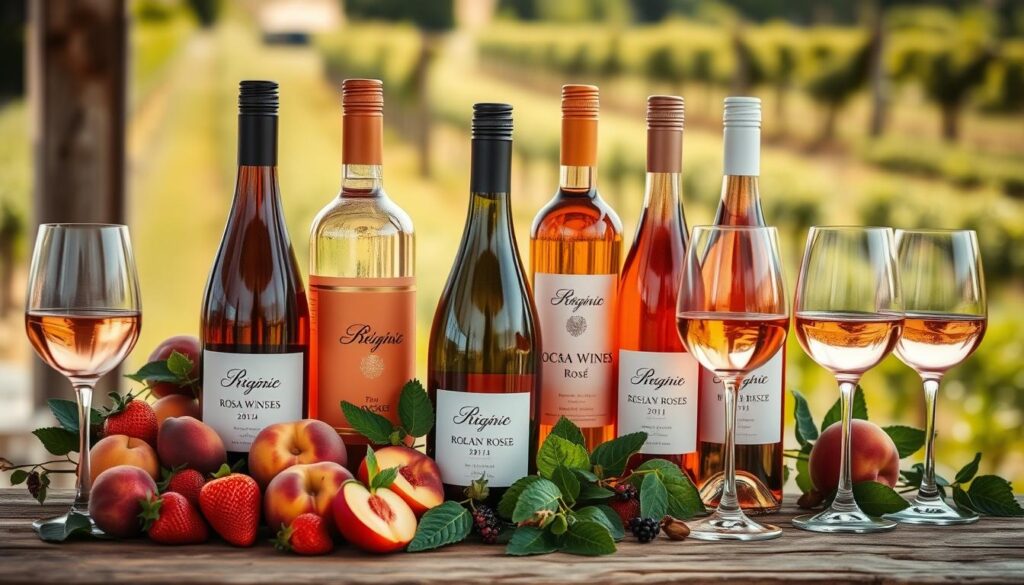
- Frey Organic Rosé: A semi-sweet blush blend crafted from Sauvignon Blanc and Zinfandel grapes.
- Bellissima Sparkling Rosé: Made from organic Pinot Grigio grapes, this wine sparkles with elegance.
- JoieFarm Rosé: An exquisite salmon-colored rosé that thrives on sustainably harvested Nero d’Avola grapes.
- Jon Bon Jovi’s Rosé: This blend of Grenache, Cinsault, and Mourvedre grapes showcases his commitment to quality.
- JuneShine Hard Kombucha Rosé: Combining organic red wine grapes with a refreshing twist.
The outstanding characteristics of these organic rosés not only tantalize the taste buds but also prioritize environmental stewardship. Enjoying organic rosé means embracing flavors born from 10,000 years of labor-intensive farming traditions. With many pink wine options available at various price points, organic rosé wines are here to impress you and your guests, turning every gathering into a memorable experience.
Maintaining a Sustainable Vineyard: What It Means for You
Choosing wines produced through sustainable vineyard practices contributes not only to your enjoyment but also to the health of the environment. By selecting wines that adhere to eco-friendly winemaking methods, you support a system that enhances soil health and promotes biodiversity. One of the standout approaches is biodynamic farming, which emphasizes a holistic perspective on agriculture.
Many vineyards now implement key principles focused on being environmentally sound, economically viable, and socially equitable. This tripartite approach fosters communities dedicated to responsible farming methods, water conservation strategies, and energy efficiency during production. As a result, these sustainable vineyard practices yield wines with more complex flavor profiles while also caring for the environment.
The movement toward sustainability in winemaking has gained momentum, with significant progress noted in regions like New Zealand, where over 70% of vineyards are certified sustainable. Noteworthy certification bodies such as the California Sustainable Winegrowing Alliance (CSWA) and Sustainable Wine Ltd. have established criteria to ensure responsible practices. Each of these certifications emphasizes both social responsibility and environmental protections, setting standards for labor ethics and ecological balance.
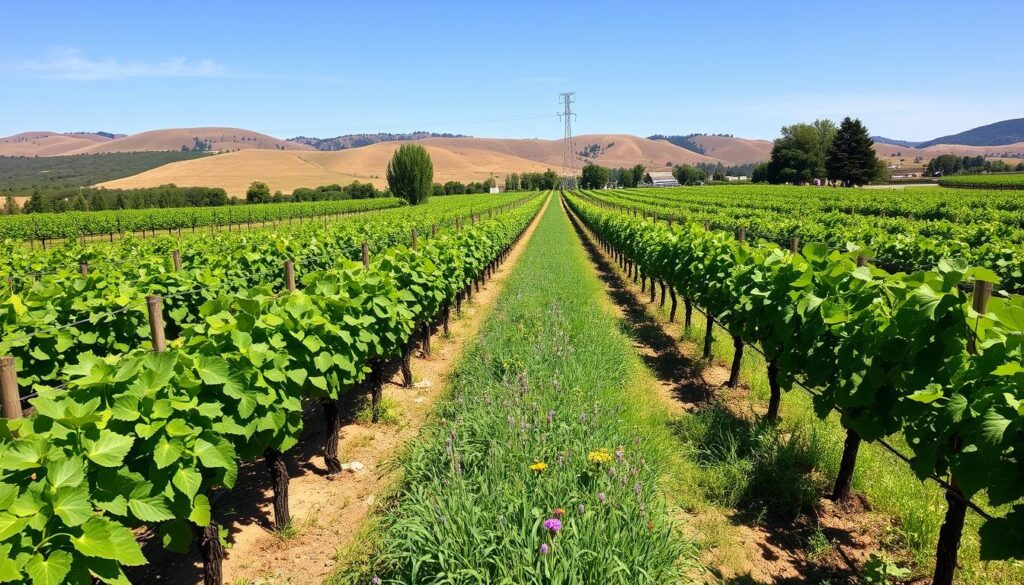
Despite the benefits, the journey toward sustainable wine production is not without challenges. Climate variability can impact grape quality, necessitating innovative eco-friendly management strategies. Additionally, maintaining irrigation while conserving water remains a critical issue. Nevertheless, the benefits of sustainable wine are compelling—you support healthier communities, promote biodiversity, and foster businesses committed to ethical labor practices.
| Benefits of Sustainable Wine | Key Features | Challenges |
|---|---|---|
| Complex Flavor Profiles | Environmentally-friendly Production | Climate Variability |
| Fostering Healthier Communities | Social Responsibility | Water Conservation |
| Promoting Biodiversity | Reduced Chemical Inputs | Pest Management |
| Conserving Water Resources | Ethical Labor Practices | Maintaining Quality |
By embracing these sustainable practices, you not only enhance your personal wine experiences but also contribute to a thriving planet. Each bottle you choose plays a role in promoting these vital efforts in the wine industry. By seeking out wineries that prioritize sustainability, you can explore top wineries that not only produce high-quality wines but also prioritize eco-friendly practices. These wineries often offer unique and memorable tasting experiences, allowing you to fully appreciate the beauty of sustainable wine production while also supporting a more environmentally conscious industry. So next time you’re looking to enjoy a glass of wine, consider choosing from one of these top wineries and know that you are making a positive impact on the planet with each sip.
The Healthiest Wine Options for Your Lifestyle
When you seek the healthiest wine options, consider organic wines for their numerous advantages. These selections are typically free from harmful additives and boast lower sugar content, which aligns well with health-conscious choices. Brands like Charles Shaw offer certified organically grown wines for as little as $3.99, making them both affordable and health-oriented. Avaline wines, averaging $19.99 per bottle, provide a premium experience without compromising sugar levels.
Low sugar wines, such as Don’t Mind if I Do Sauvignon Blanc, priced at $7.99, demonstrate that conscious choices can be budget-friendly. Additionally, white wines like Sauvignon Blanc, Pinot Grigio, and Albariño are excellent choices for their lower sugar content compared to sweeter varieties. Research indicates that wines below 12% alcohol-by-volume (ABV) tend to have less sugar. For extra hydration, consider adding sparkling water to your wine. This method can stretch servings and reduce calorie intake without sacrificing enjoyment.
In terms of health benefits, red wines are paramount due to their rich antioxidant profile. They contain eight times more antioxidants than their white counterparts, supporting heart health and potentially increasing longevity. Pinot Noir stands out further, delivering up to 16 mg/L of resveratrol, which is linked to better cholesterol levels. These insights reinforce the notion that wine, especially organic options, can contribute positively to a balanced lifestyle.

Conclusion
As you explore the world of organic wines, it becomes evident that these selections not only tantalize your taste buds but also contribute significantly to your well-being. The health benefits of organic wines are underscored by their lower sulfite content and absence of pesticide residues, making them a healthier alternate choice for those who value what they consume. Furthermore, by embracing organic wines, you are playing a part in encouraging sustainable drinking practices that benefit both the environment and local biodiversity.
The growing popularity of organic wines reflects a shift in consumer preferences towards authenticity and eco-friendliness. With an expanding assortment of organic options in stores and restaurants, your choices can align more closely with sustainable values. These wines provide a unique tasting experience, showcasing the true expression of their grape varieties and terroirs, thus serving dual purposes: indulgence in flavor and commitment to sustainability.
By choosing organic wines, you’re not only savoring exquisite flavors but fostering a lifestyle that champions environmental health. So, why not take the plunge into the vibrant and rich world of organic wines? You might just find that your palate enjoys the journey as much as your conscience appreciates the choice.
